Children’s Book Week is an annual celebration of Australian children’s publishing, and the authors and illustrators who contribute to this vibrant industry. Look out for activities, such as special story time sessions, offered by your local schools and public libraries as part of the celebrations.
Book Week also means the CBCA Children’s Book of the Year awards, whose winners were announced last Friday (August 21). Last week we looked at shortlisted titles in the Early Childhood category. This week, we spotlight the winning titles in two categories particularly suited to primary-aged children – the Younger Readers award and the Picture Book of the Year award.
Book of the Year (Younger Readers)
This year’s winners are diverse in both style and target ages.
Winner: The Cleo Stories by Libby Gleeson (illustrated by Freya Blackwood)
 Libby Gleeson and Freya Blackwood have achieved outstanding results at this year’s awards, with two of their co-creations taking out top honours (the other title, Go to Sleep, Jessie! has won the Early Childhood Book of the Year). Once again, they demonstrate their skill at observing the minutiae of daily life, and at detailing the dramas of childhood with understanding and affection.
Libby Gleeson and Freya Blackwood have achieved outstanding results at this year’s awards, with two of their co-creations taking out top honours (the other title, Go to Sleep, Jessie! has won the Early Childhood Book of the Year). Once again, they demonstrate their skill at observing the minutiae of daily life, and at detailing the dramas of childhood with understanding and affection.
The Cleo Stories contain two short stories about Cleo, an imaginative six-year-old. The first thing you notice about this book is its beautiful design – thick silky pages packed with full-colour illustrations. It is halfway between picture book and chapter book, and is perfect for early-to-middle-primary readers.
In the first story,’The Necklace’, Cleo desperately wants a necklace of her own, but she will only be given one on her birthday – which is so far away that Cleo decides to come up with a better solution. Then in ‘The Present’, Cleo is trying to find the perfect present for her mum’s birthday – something that is just from her. These stories show the enterprising Cleo solving her dilemmas with enthusiasm, creativity and humour. A sequel is already in progress and will be available later this year.
Honour Book: Two Wolves by Tristan Bancks
 This dark mystery-thriller is a departure for Tristan Bancks, previously known for sassy school stories for pre-teens and teens. Ben is a slightly-chubby, slightly-gawky boy who just loves the comfort and security of his bedroom. Then the Police arrive at Ben’s house looking for his parents. Minutes after they leave, his parents arrive and bundle Ben and his little sister Olive into their car to go on a “holiday”. But Ben’s parents behave strangely – they are not using their credit-cards or mobile phones, they cut their hair and they lie to the police – what’s going on? As Ben uses his amateur detective skills to gather evidence and understand the events, he realises that his parents are in serious trouble, and that he has some tough decisions to make.
This dark mystery-thriller is a departure for Tristan Bancks, previously known for sassy school stories for pre-teens and teens. Ben is a slightly-chubby, slightly-gawky boy who just loves the comfort and security of his bedroom. Then the Police arrive at Ben’s house looking for his parents. Minutes after they leave, his parents arrive and bundle Ben and his little sister Olive into their car to go on a “holiday”. But Ben’s parents behave strangely – they are not using their credit-cards or mobile phones, they cut their hair and they lie to the police – what’s going on? As Ben uses his amateur detective skills to gather evidence and understand the events, he realises that his parents are in serious trouble, and that he has some tough decisions to make.
First and foremost, Two Wolves is a tense, action-packed story. Tristan Bancks’ background in acting and filmmaking is evident in his vivid descriptions, and dramatic opening – readers are thrown straight into the action, creating many questions that are slowly resolved as the story progresses. The language has a terse rhythm that builds a sense of urgency and threat.
What lifts it out of the ordinary is the convincing portrayal of flawed characters, and of Ben’s personal growth – his developing resourcefulness, self-belief and ability to make difficult decisions. Those moral and ethical dilemmas – about right and wrong, honesty and loyalty, also test us readers and hold our interest right to the last page.
Honour Book: Withering-by-Sea: a Stella Montgomery Intrigue by Judith Rossell
 This Honour Book commendation caps off a successful year for Withering-by-Sea, which has already won two awards – the Indie Book Awards (Children’s and YA Book of the Year), and the Australian Book Industry Awards (Book of the Year for Older Children).
This Honour Book commendation caps off a successful year for Withering-by-Sea, which has already won two awards – the Indie Book Awards (Children’s and YA Book of the Year), and the Australian Book Industry Awards (Book of the Year for Older Children).
High on a cliff in the town of Withering-by-Sea stands the faded glory of the Hotel Majestic. Here, Stella feels stifled by the strict and dull upbringing given her by three dreaded Aunts. She is constantly getting in trouble for unladylike behaviour, because she prefers adventure to deportment and needlework. One day, while hiding in the hotel’s Conservatory with her Atlas, she sees a man hiding a package in a potted fern. Thereafter she is swept along in a mystery that is full of danger, black magic and even singing cats!
Judith Rossell has used period language and the conventions of the Victorian Gothic genre to great effect, resulting in a moody, spooky mystery. The cold mist-wreathed setting seems quintessentially English and echoes the misery of Stella’s predicament. The illustrations, similar in style to Edward Gorey, add great visual impact. A subplot relating to Stella’s mysterious background and parentage is intriguing and paves the way for future instalments.
Picture Book of the Year
Books considered for the Picture Book of the Year award are typically aimed at older children but can be enjoyed by all ages (including adults!). Compared to the Early Childhood category, these stories tend to be more complex, and may also include mature or challenging themes such as death or trauma.
Winner: My Two Blankets by Freya Blackwood and Irena Kobald
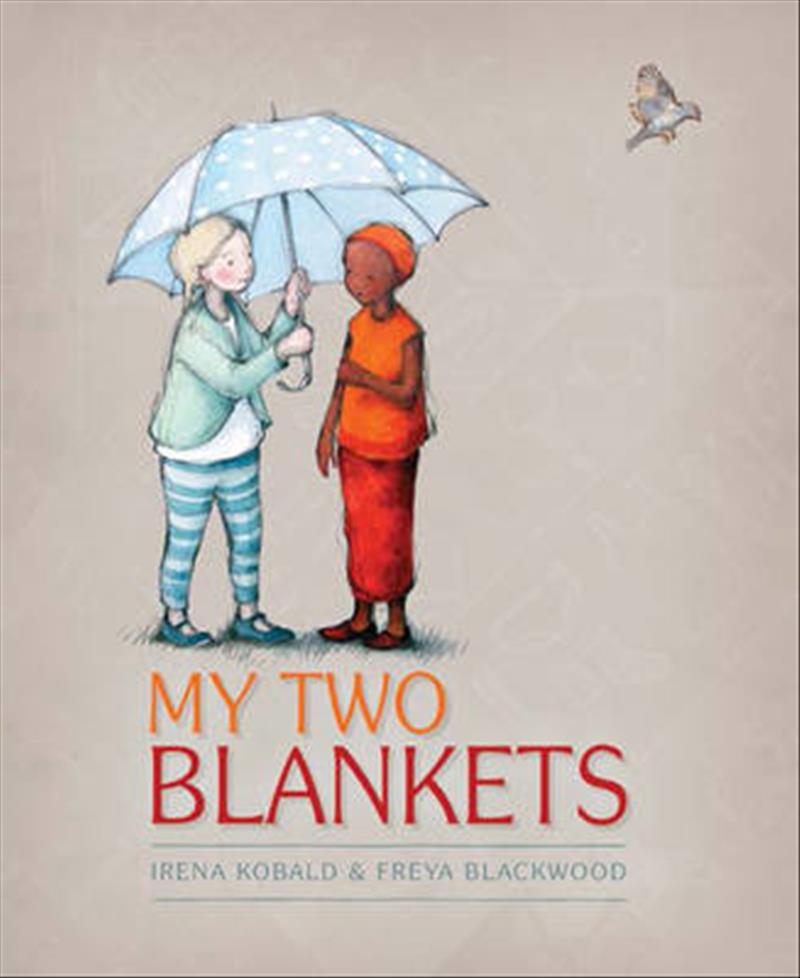
2015 is a great year for Freya Blackwood. She has just won a hat-trick at the CBCA awards – each of her three shortlisted titles (Go to Sleep, Jessie!, The Cleo Stories and My Two Blankets) has won in its category. In fact, she is the first creator in the awards’ 70-year history to have been honoured three times in the same year. These wins add to her already impressive tally of past honours, including three previous CBCA wins, and the Kate Greenaway Medal, a prestigious international prize for illustrators.
My Two Blankets offers a child’s perspective on life as a refugee. Cartwheel left her home to escape the war, and has sought safety in a new country. Everything is strange in her new home, making Cartwheel feel isolated and lonely. She seeks comfort in her own language – her “old blanket” of familiar words and sounds. Then Cartwheel meets a friendly girl at the park. As their friendship grows, Cartwheel gains new words – words that she uses to weave a new blanket that is just as comfortable as her old one.
Irena Kobald’s heartwarming story of friendship and acceptance marries beautifully with Freya Blackwood’s gentle, dreamy illustrations. The use of colour and the creative depiction of the abstract concept of ”language” are particularly noteworthy.
Honour Book: One Minute’s Silence by Michael Camilleri and David Metzenthen
 A roomful of bored modern-day students are led to imagine themselves in the midst of the Gallipoli campaign as they observe one minute’s silence. One minute’s silence is enough to imagine the thousands of wild colonial boys charging into relentless gunfire; it is also enough to imagine how the Turks felt, trying to defend their homes and their lives, as they watch slouch-hatted strangers run uphill towards them.
A roomful of bored modern-day students are led to imagine themselves in the midst of the Gallipoli campaign as they observe one minute’s silence. One minute’s silence is enough to imagine the thousands of wild colonial boys charging into relentless gunfire; it is also enough to imagine how the Turks felt, trying to defend their homes and their lives, as they watch slouch-hatted strangers run uphill towards them.
One Minute’s Silence is a heartbreaking story conveyed by considered, evocative language and intricate illustrations packed with meaning. By showing the Battle of Gallipoli from both sides, the story extends beyond the history of a single battle, but instead reflects upon the senselessness and horror of all wars. It is a visually stunning, affecting addition to the range of books created to commemorate the centenary of World War One. One Minute’s Silence deserves every one of the three honours it gained in this year’s CBCA Awards – winner of the Crichton Award for New Illustrators, Honour Book in the Picture Book category, as well as Notable Book in the Information Book category.
Honour Book: The Stone Lion by Ritva Voutila and Margaret Wild
 Sometimes, stone animals get a chance to become warm, breathing creatures for a short time – if they desire it greatly with a generous heart. The stone lion outside the library longs to become alive, to run free. He is finally granted his wish one snowy day, but two young children desperately need his help – will he sacrifice his own desires for their sake?
Sometimes, stone animals get a chance to become warm, breathing creatures for a short time – if they desire it greatly with a generous heart. The stone lion outside the library longs to become alive, to run free. He is finally granted his wish one snowy day, but two young children desperately need his help – will he sacrifice his own desires for their sake?
The Stone Lion is a poignant story about compassion and selflessness, and also a celebration of libraries.
We see and rejoice in the lion’s transformation from heartless and indifferent – unable to comprehend human emotions – to humanity, with the ability to sympathise and the desire to help.
Margaret Wild is a well-loved author who has won the CBCA Picture Book of the Year award three times in a career of over thirty years. The period setting used in Ritva Voutila’s drawings makes this story dreamy and timeless – a bittersweet fable reminiscent of Oscar Wilde’s The Happy Prince.










 The Incredible Adventures of Cinnamon Girl
The Incredible Adventures of Cinnamon Girl
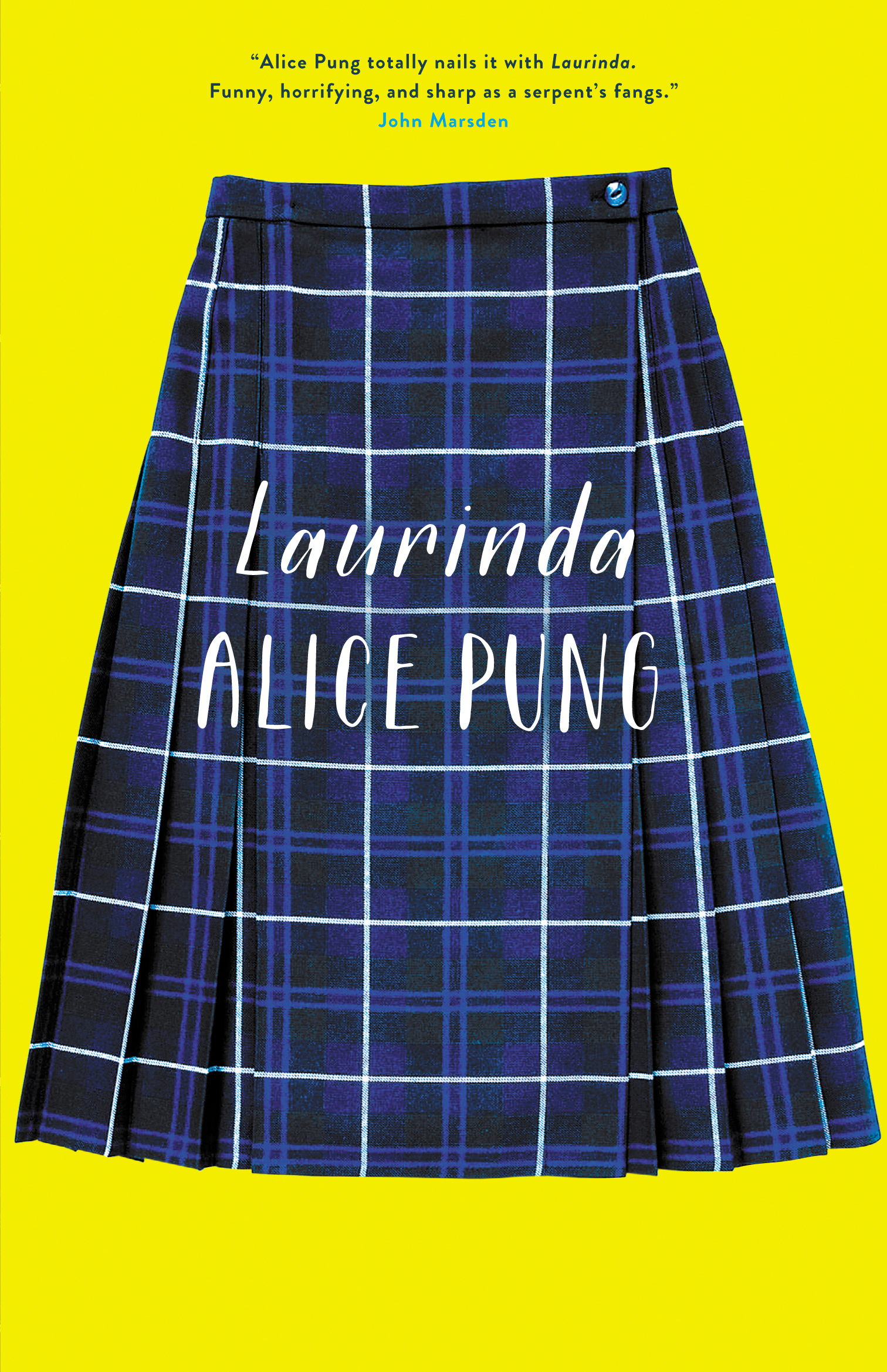 Laurinda
Laurinda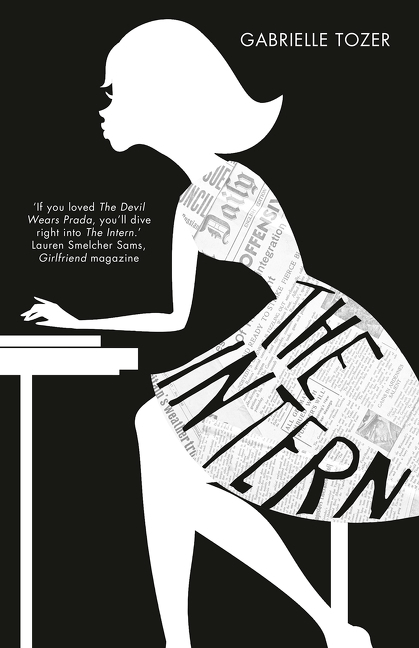
 The Protected
The Protected






 Ugly
Ugly




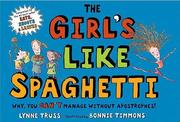
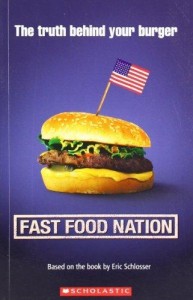









 For stories with a multicultural perspective try Alice Pung’s
For stories with a multicultural perspective try Alice Pung’s  For fans of dark fantasy try Margo Lanagan’s
For fans of dark fantasy try Margo Lanagan’s 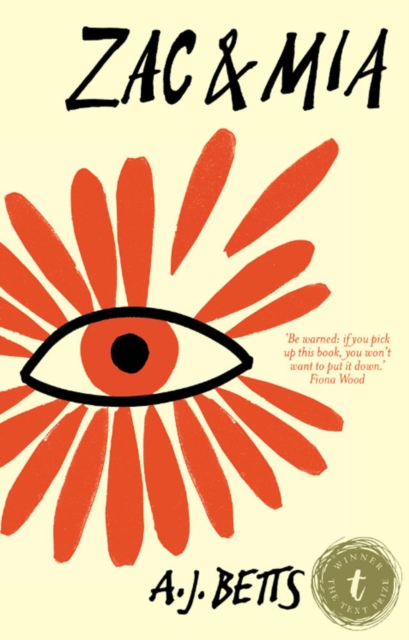
 For fans of morally ambiguous stories try Justine Larbalestier’s
For fans of morally ambiguous stories try Justine Larbalestier’s 
 This dark mystery-thriller is a departure for Tristan Bancks, previously known for sassy school stories for pre-teens and teens. Ben is a slightly-chubby, slightly-gawky boy who just loves the comfort and security of his bedroom. Then the Police arrive at Ben’s house looking for his parents. Minutes after they leave, his parents arrive and bundle Ben and his little sister Olive into their car to go on a “holiday”. But Ben’s parents behave strangely – they are not using their credit-cards or mobile phones, they cut their hair and they lie to the police – what’s going on? As Ben uses his amateur detective skills to gather evidence and understand the events, he realises that his parents are in serious trouble, and that he has some tough decisions to make.
This dark mystery-thriller is a departure for Tristan Bancks, previously known for sassy school stories for pre-teens and teens. Ben is a slightly-chubby, slightly-gawky boy who just loves the comfort and security of his bedroom. Then the Police arrive at Ben’s house looking for his parents. Minutes after they leave, his parents arrive and bundle Ben and his little sister Olive into their car to go on a “holiday”. But Ben’s parents behave strangely – they are not using their credit-cards or mobile phones, they cut their hair and they lie to the police – what’s going on? As Ben uses his amateur detective skills to gather evidence and understand the events, he realises that his parents are in serious trouble, and that he has some tough decisions to make.



 A House of her Own
A House of her Own
 Go to Sleep, Jessie!
Go to Sleep, Jessie!

 Noni the Pony Goes to the Beach
Noni the Pony Goes to the Beach